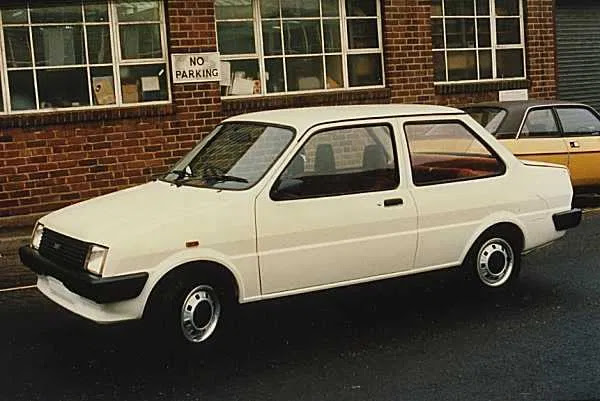They made a prototype of a Metro saloon. It didn't make production and was it a missed opportunity for British Leyland?
WHEN British Leyland was developing the hugely important Metro (LC8), they did have a saloon variant in the pipeline. With prototypes made, but the idea of a booted Metro wasn't pursued further as it never reached production.
To my undertsanding, BL management must've felt that there wouldn't have been a return from the investment put into making and selling the Metro saloon. Not enough confidence in the product. Given that the company was state-owned at that point. Funds would have also been tight for the company. So, it was understandable BL were keen to maximise profits from the Metro. Which was arguably their most important car at the time.
Given the consumer trend of Austin Rover's cars. Which was mainly in its domestic home market and accounted for the lion's share of their cars sold. As more of their cars made and remained in Britain than they were being sold and exported overseas. Where buyers were favouring hatchbacks over saloons as well when it came to our smaller cars.
Despite
this, the Metro did enjoy modest sales overseas in Western Europe in
countries such as France, Spain and Italy. But if they made a three-box
Metro. Could this have boosted its appeal, and subsequently sales, in
Ireland and Eastern Europe? The markets where they have a preference for saloons
over hatchbacks.
 However, Vauxhall and Volkswagen offered booted variants of the Nova and Polo supermini at that time. Which were popular with more traditional and conservative buyers in the UK. They did sell reasonably well, if not as well as their hatchback siblings. Who were more accustomed to saloons and preferred them over hatchbacks. So there was a niche market there.
However, Vauxhall and Volkswagen offered booted variants of the Nova and Polo supermini at that time. Which were popular with more traditional and conservative buyers in the UK. They did sell reasonably well, if not as well as their hatchback siblings. Who were more accustomed to saloons and preferred them over hatchbacks. So there was a niche market there.It's very likely, that the Metro saloon would not have sold as well as its hatchback counterpart if the Nova and Polo's saloons sales figures were anything to by. If it did enter production, the Metro saloon could have potentially built on its success.
Much in a similar way that the five-door variant did upon its arrival in 1984. Needless to say on a smaller scale, but boosting the Metro's appeal by expanding its range of another bodystyle in the range.
The Metro saloon's model range would have been similar to the five-door Metro. Available in City, City X, Mayfair and Vanden Plas guises. Highly doubt there would have been an MG model, mind. On the basis that Austin Rover didn't make a more-door MG Metro.
But it's great to know that the prototypes survives with us today. It's lovingly preserved (in a museum, I presume), and being put out on display in classic car shows and events. Definite ice breaker for any car enthusiasts in or out of the BLARG circle.
As as often the case with British Leyland. What if? Could have? Should have? Would have? Very easy to look in hindsight now, and debate on whether or not this was an oppotunity missed by BL. We'll never know for sure but we can always speculate over that...
As as often the case with British Leyland. What if? Could have? Should have? Would have? Very easy to look in hindsight now, and debate on whether or not this was an oppotunity missed by BL. We'll never know for sure but we can always speculate over that...
Images credited to Flickr and AROnline.


No comments:
Post a Comment
Have your say and leave a reply...